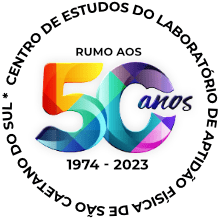The Prevalence Of Physical Activity And Its Associated Effects Among Students In The São Paulo Public School Network, Brazil
Artigo Publicado em Ciência & Saúde Coletiva em 2016. Escrito por Leonardo José Silva , Victor Keihan Rodrigues Matsudo, Douglas Roque Andrade, Mário Azevedo, Gerson Luis de Moraes Ferrari,Luis Carlos Oliveira, Timóteo Leandro Araújo, Sandra Marcela Mahecha Matsudo. The current study evaluated physical activity (PA) level and its associated effects among students in the public network of São Paulo, Brazil. A cross-sectional study was taken using a representative sample of students in São Paulo public school system.
Palavras-chave
International Physical Activity Questionnaire determined PA level. Students who reported at least 300 minutes/week of PA were considered active. The independente variables were: gender, age, body mass index, education, region, recognition of the Agita São Paulo program. The prevalence of regular PA was 71.7%. Males (PR = 1.09, 95% CIs = 1.04 -1.15) at least 17 years old (PR = 1.16, 95% CIs 1.09-1.24) in their 3rd year of high school (PR = 1.20, 95% CIs = 1.12-1.29) who resided in the Midwest region (PR = 1.27, 95% CIs 1.16-1.38) were most likely to be active. Males at least 17 years old in their 3rd year of high school who lived in the Midwest and recognized the Agita São Paulo/Agita Galera program had higher levels of PA. São Paulo studentspresented a high level of PA. Moreover, males older than 17 years, attending their 3rd year of high school, who lived in the Midwest region, and recognized the Agita São Paulo/Agita Galera program were the most likely to be more active.
